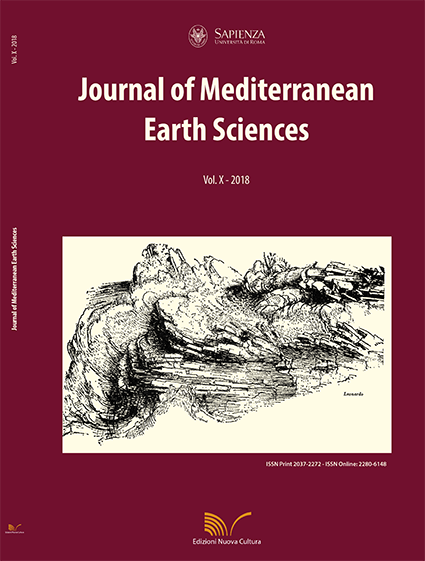Fibrous antigorite in Mount Reventino area of central Calabria
DOI:
https://doi.org/10.3304/JMES.2018.012Keywords:
Fibrous antigorite, Asbestos, SEM, TEM, FTIRAbstract
Naturally Occurring Asbestos (NOA) can form in several types of geologic settings depending on the rock types and geologic history of an area. Calabria region has many settings that are favourable for the presence of NOA because of the variety of older metamorphic and igneous rocks and by the multiple episodes of deformation that many of these rocks have undergone. In Calabria NOA are mainly concentrated in the ophiolitic sequences belonging to the Gimigliano-Mount Reventino Unit in the southern part of the Sila massif and along the Coastal Chain. The amphibole-group asbestos, in particular tremolite, is the most common type of asbestos found in Calabria. However, serpentine minerals were found, especially in Mount Reventino surroundings. The purpose of this study was to report the presence of asbestiform antigorite, one of the natural mineral fibers of the serpentine group, very abundant and commonly found associated with asbestos chrysotile in metabasites and serpentinites outcrops in the Mount Reventino area. The set of the different analytical techniques: optical microscopy, scanning and transmission electron microscopy combined with energy dispersive spectroscopy and Fourier transform infrared spectroscopy analyses allowed its complete characterization. Antigorite showed fibers with a length-to-width ratio around 20 and more. The toxicological studies indicate a carcinogenic potential more closely aligned to that amphibole asbestos. In absence of epidemiologic studies, further research about the degree of asbestiform antigorite hazard are necessary. Actions should be taken to avoid or diminish a possible risk using the same prevention measures as for asbestos fibers, although fibrous antigorite is not recognized in most asbestos regulation.Downloads
Published
2018-09-05
How to Cite
Campopiano, A., Bruno, M. R., Olori, A., Angelosanto, F., Iannò, A., Casciardi, S., & Spadafora, A. (2018). Fibrous antigorite in Mount Reventino area of central Calabria. Journal of Mediterranean Earth Sciences, 10. https://doi.org/10.3304/JMES.2018.012
Issue
Section
Naturally Occurring Asbestos: state of the art and strategies for investigation and management
License
The submission has not been previously published, nor is it before another journal for consideration (or an explanation has been provided in Comments to the Editor).


